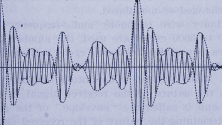While researching for my article Open Music: Is It Viable, I ran across several worthwhile sites that were great resources, but not quite what I needed for talking about an open music model. However, they certainly deserve attention for the good they are doing in the music/entertainment community. What better way than starting a series on helpful projects based around open-source multimedia creation? Each post in this series will focus on three things:
- How I first heard of the site or project. I hope this will help to show how viral this open source thing truly is.
- A quick blurb about the site and what it does as a whole, which gives you a good idea of other ways the site/project can be useful.
- A bit about how you can help. My hope is that through this series, we can really get some extra interest generated in these projects that are well deserving of the attention.
This week's featured site is The Freesound Project (TFP). While working on a personal Ardour project, I began looking for some sound clips to throw into a song in order to bring the track a bit more life. Namely I was looking for a drunken countdown, or something similar. I had bookedmarked TFP while researching an earlier article, so I figured I'd give it a go. What I found after a quick search using their integrated search tool was a well-recorded group countdown from roughly the number 12. They mumbled at the beginning, making it seem like it could very well be at a bar. What's great is, as mentioned previously in my Open Music article, this meant that I had to attach credit to the song I was working on. Thus generating more traffic back to the page where I received the file, helping both the author of the file itself and The Freesound Project as a whole. It's a great web that is quickly woven around art that otherwise would go unnoticed. The best part? It wouldn't be possible at this level without open source.
About the site
The Freesound Project has 86,000+ sound files, all licensed by some form of an open source license, created and uploaded by users who are a part of the project's community. Each file has a full preview within the browser, an image of the wave-form, and a link to explain, in detail, the type of license applied to it. Moreover there is a rating and comment system, as well as a way to track new sounds uploaded via RSS. There are forums and lists of the most active and highest rated users, as well as competitions that occur to spur creative new sounds.
Lastly, and this is my favorite option, there is a Random Sample module that will inevitably lead to interesting results. All sounds can be added directly through the site and geotagged to specify geographically where the sound originated. In other words, there is some really cool stuff to be had.
How you can help
Start using sounds found on the site. You'll quickly find gaps in what they have and don't have. Then you can step up and contribute a few sounds you have recorded. From there, your works will be critiqued, rated and used. Your sounds might get used in projects, credit goes back to where credit is due, and more art is created. It's really a great thing to be a part of.
Have you used The Freesound Project before? If so, what were the results? Are you familiar with other projects working on similar goals? Sound off in the comments section.
While researching for my article on <Open Music: Is It Viable>, I ran across several worthwhile sites that were great resources, but not quite what I needed for talking about an open music model. However, they certainly deserve attention for the good they are doing in the music/entertainment community. What better way than starting a series on helpful resources for open-source multimedia creation? This series is going to focus on three main things: 1) How I first heard of the site or project. Hopefully this will help to show how viral this open source thing truly is. 2) A quick blurb about the site and what it does as a whole, which gives you a good idea of other ways the site/project can be useful. 3) Lastly, I am including a blurb about how you can help. My hope is that through this series, we can really get some extra interest generated in these projects that are well deserving of the attention.
This week's featured site is <The Freesound Project>. While working on a personal <Ardour> project, I began looking for some sound clips to throw into a song or two in order to bring the songs a bit more life. Namely I was looking for a drunken countdown, or something similar. I had bookedmarked this site in the past based on what I found in previous research, so I figured I'd give it a go. What I found after a few seconds in the search results was a well recorded, group countdown from roughly the number 12. They mumbled at the beginning, making it seem like it could very well be at a bar. What's great is, as mentioned previously in my Open Music article, this meant that I had to attach credit to the song I was working on. Thus generating more traffic back to the page where I received the file, helping both the author of the file itself and The Freesound Project as a whole. It's a great web that is quickly woven around art that otherwise would go unnoticed. The best part? It wouldn't be possible at this level without open source.
About the site: The Freesound Project has 86,000+ sound files, all licensed by some form of an open source license, created and uploaded by users who are a part of the project's community. Each file has a full preview within the browser, an image of the wave-form and a link to explain, in detail, the type of license applied to it. Moreover there is a rating and comment system, as well as a way to track new sounds uploaded via RSS. There are forums and lists of the most active and highest rated users, as well as competitions that occur to spur creative new sounds. Lastly, and this is my favorite option, there is a '<Random Sample>' module which will inevitably lead to interesting results. All sounds can be added directly through the site, and can be geotagged to specify where the sound originated. In other words, there is some really cool stuff to be had.
How you can help: Start using sounds found on the site. You'll quickly find gaps in what they have and don't have. Hopefully then you can step up and contribute a few sounds you have recorded, or have lying around. From here, your works will be critiqued, rated and used. Your sounds might get used in projects, credit goes back to where credit is due and more art is created. It's really a great thing to be a part of.
Have you used The Freesound Project before? If so, what were the results? Are you familiar with other projects working on similar goals? Sound off in the comments section!







Comments are closed.